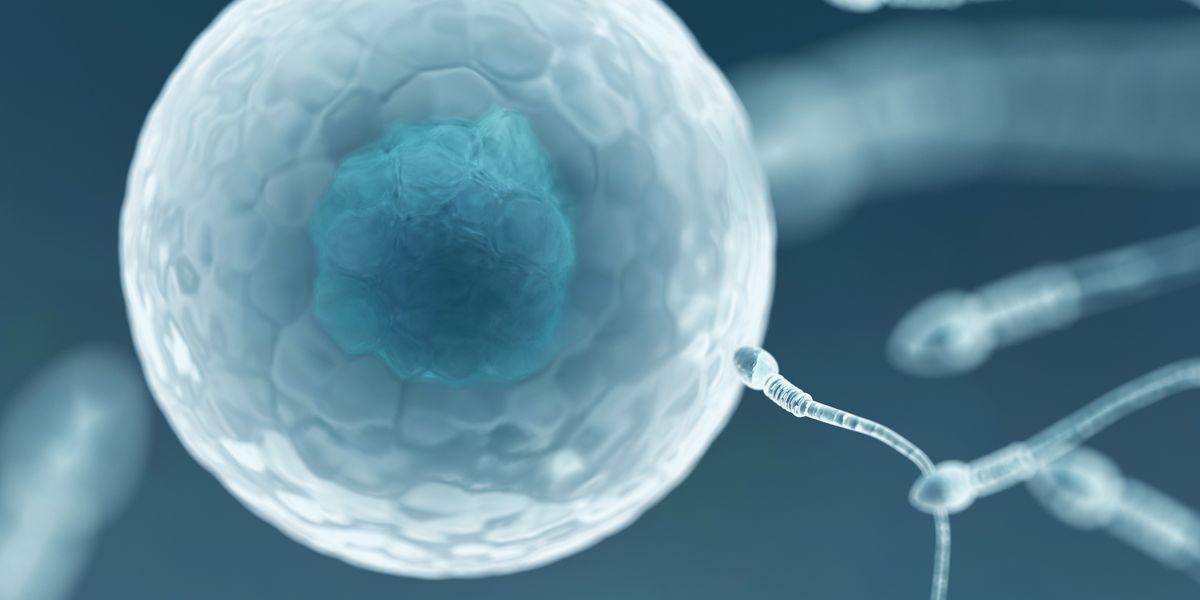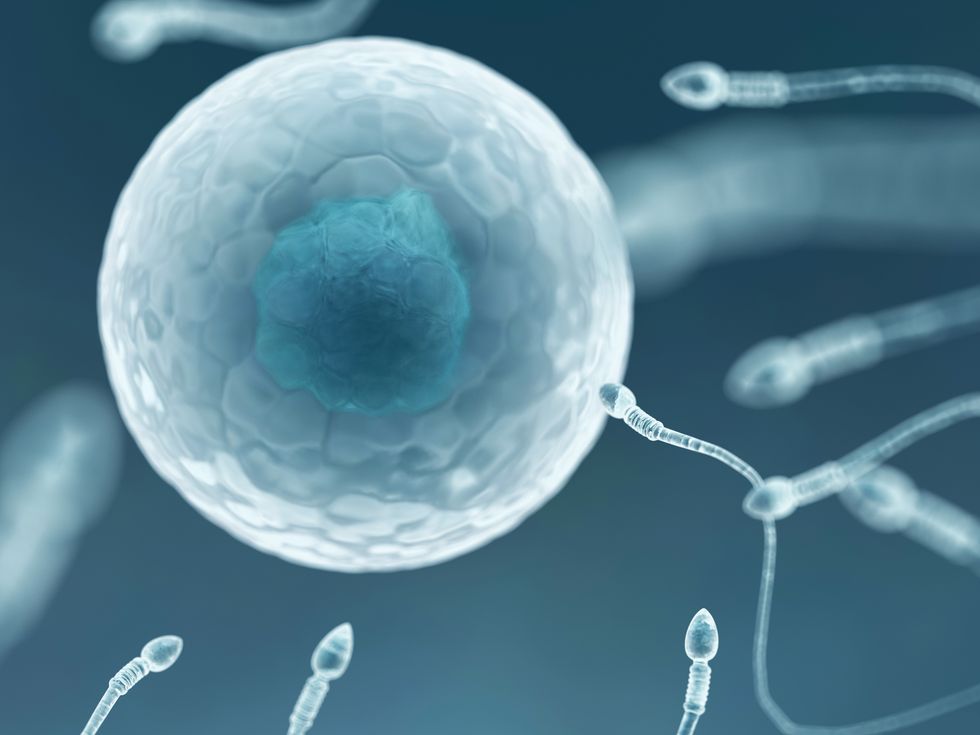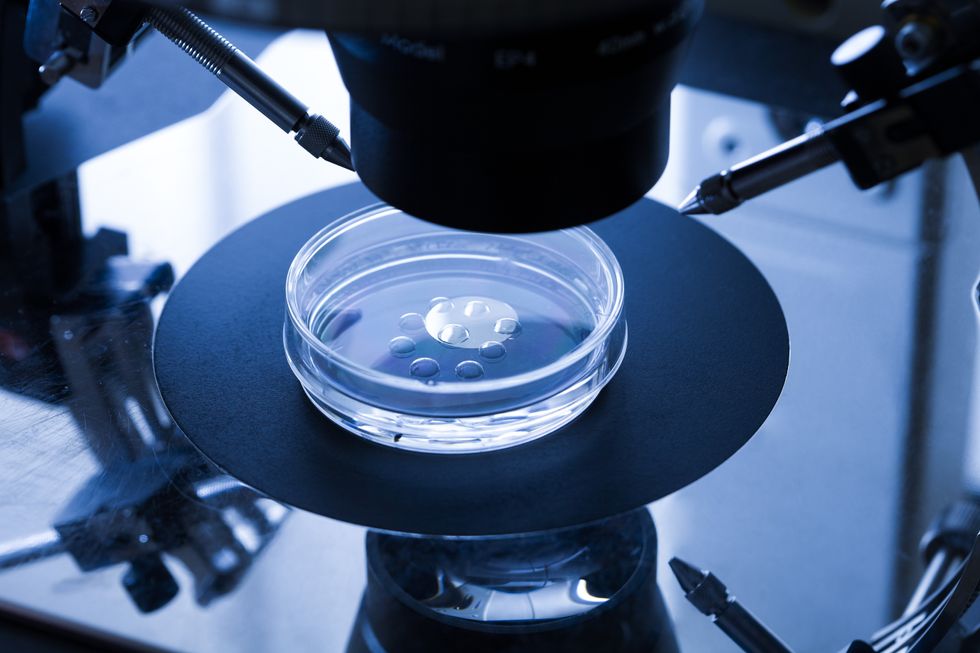



Microplastics have been discovered in human sperm and eggs for the first time, raising urgent questions about the hidden risks the tiny pollutants pose to fertility.
The findings, revealed today at the 41st Annual Meeting of the European Society of Human Reproduction and Embryology (ESHRE) in Paris, showed that microplastics were found in the reproductive fluids of 69 per cent of women and 55 per cent of men taking part in a new study.
Scientists tested follicular fluid, which surrounds the egg in the ovary, and seminal fluid from healthy volunteers. Both are vital for natural conception and IVF.
“We weren’t entirely surprised to find microplastics in fluids of the human reproductive system,” said lead researcher Dr Emilio Gomez-Sanchez, “but we were struck by how common they were - found in 69 per cent of the women and 55 per cent of the men we studied.”
A cocktail of everyday plastics - polytetrafluoroethylene (PTFE), polypropylene, polystyrene, and others - was detected. PTFE, better known as Teflon, used in non-stick pans, was the most common. It was found in nearly a third of women’s samples and 41 per cent of men's.
To prevent contamination, samples were carefully collected in glass containers and tested using cutting-edge laser infrared microscopy.
Although the study did not measure the direct impact on fertility, experts say the implications are deeply concerning.
“What we know from animal studies is that in the tissues where microplastics accumulate, they can induce inflammation, free radical formation, DNA damage, cellular senescence, and endocrine disruptions,” said Dr Gomez-Sanchez.
“It’s possible they could impair egg or sperm quality in humans, but we don’t yet have enough evidence to confirm that.”

Microplastics have been discovered in human sperm and eggs for the first time
GETTY
The researchers now plan to expand their analysis to larger groups and look more closely at how these particles affect egg and sperm health.
They will also explore whether certain lifestyles or environments increase a person's microplastic exposure.
While the long-term impact is still being studied, the advice for now is caution - not panic.
“There’s no need for alarm at this point,” Dr Gomez-Sanchez stressed.
“Microplastics are just one of many elements that may play a role in fertility. However, it is sensible to consider ways of reducing our exposure to them.”
Simple steps like using glass containers to store or heat food, and limiting water from plastic bottles, could help reduce intake, he advised.

Eggs in a petri dish
GETTY
Reproductive experts say the findings are part of a growing body of evidence linking environmental pollution to declining fertility worldwide.
“Environmental factors influencing reproduction are certainly a reality, although not easy to measure objectively,” said Professor Dr Carlos Calhaz-Jorge, Immediate Past Chair of ESHRE.
“The authors of this study found microplastics in over two-thirds of follicular fluids and more than 50% of semen fluids from the studied patients.”
“Although the significance of these findings is not yet clear,” he added, “they should be considered an additional argument in favour of avoiding the generalised use of plastics in our daily lives.”
The study, “Unveiling the Hidden Danger: Detection and characterisation of microplastics in human follicular and seminal fluids”, will be published today in the respected journal Human Reproduction.
Microplastics - defined as plastic particles under 5mm - have previously been found in blood, lungs, and the placenta. But this is the first time they have been detected in the fluids directly responsible for creating new life.
Experts say this could represent a crucial turning point in how we understand modern fertility challenges.
Dr Gomez-Sanchez, who is Director of the assisted reproduction laboratory at Next Fertility Murcia and Head Embryologist at Gametia Gamete Bank, said his team’s goal was to dig deeper into what invisible threats may be quietly affecting conception.
He added that fertility is influenced by many factors, including age, genetics, and underlying health, but environmental contaminants like plastics deserve closer scrutiny.
The findings come amid growing concern that fertility rates in developed countries are falling rapidly, with couples struggling to conceive and demand for IVF at an all-time high.
“Microplastics are everywhere- from the air we breathe to the food we eat,” said another expert.
“But now we know they may be present at the very start of human life too - and that’s something we can’t afford to ignore.”
